A block of mass 1 kg is moving towards a movablen vedge of amss 2 kg as shown in figure. All surfaces are smooth. When the block leaves the wedge from top, its velocity is making an angle θ=30∘ with horizontal.
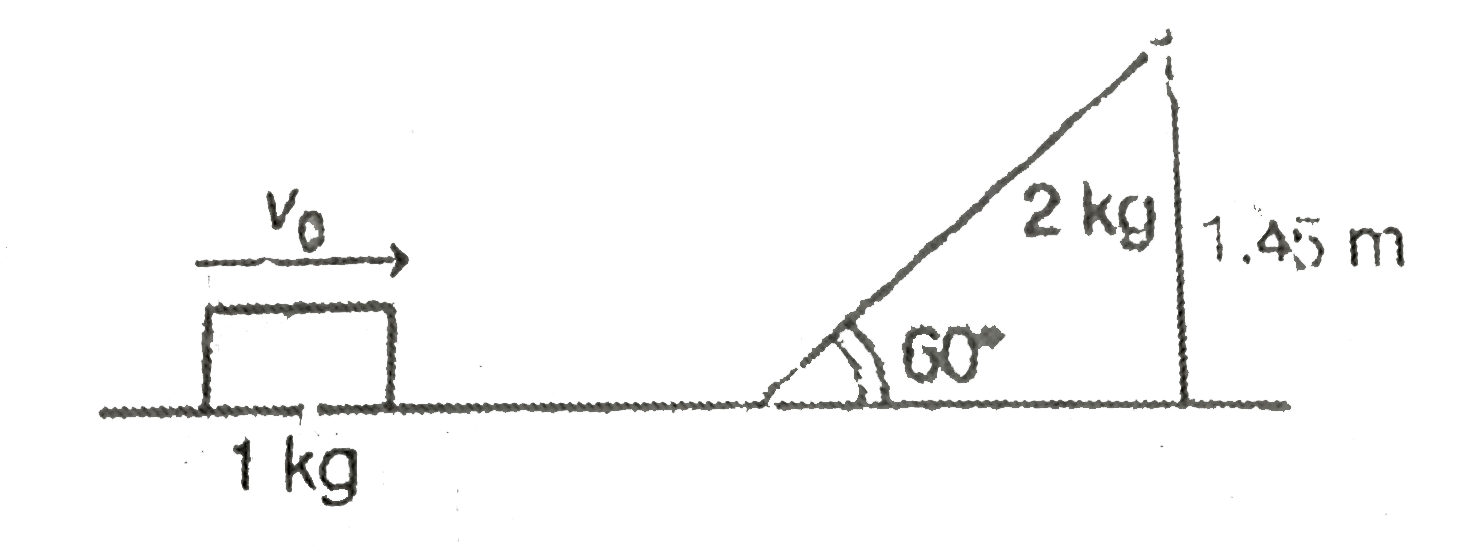
In the whole process let J be the magnitude of net impulse given to the block by the wedge, JH its horizontal component and JV its vertical component. Then
J=8√3N−S
JH=4N−S
JV=4√3N−S
All the above are true
The correct Answer is:D
Step by step video, text & image solution for A block of mass 1 kg is moving towards a movablen vedge of amss 2 kg as shown in figure. All surfaces are smooth. When the block leaves the wedge from top, its velocity is making an angle theta =30^(@) with horizontal. In the whole process let J be the magnitude of net impulse given to the block by the wedge, J_(H) its horizontal component and J_(V) its vertical component. Then by Physics experts to help you in doubts & scoring excellent marks in Class 12 exams.
Updated on:21/07/2023Topper's Solved these Questions
- COLLISION BOOK - FIITJEECHAPTER - COLLISION EXERCISE - (COMPREHENSIONS - III)
3 Videos
- COLLISION BOOK - FIITJEECHAPTER - COLLISION EXERCISE - (MATRIX MATCH TYPE)
3 Videos
- COLLISION BOOK - FIITJEECHAPTER - COLLISION EXERCISE - (COMPREHENSIONS - I)
2 Videos
- AC CIRCUITSBOOK - FIITJEECHAPTER - AC CIRCUITSEXERCISE - ASSERTION REASONING TYPE
1 Videos
- CURRENT ELECTRICITYBOOK - FIITJEECHAPTER - CURRENT ELECTRICITYEXERCISE - Comprehension -4
3 Videos
Similar Questions
A block of mass 1 kg is moving towards a movablen vedge of amss 2 kg as shown in figure. All surfaces are smooth. When the block leaves the wedge from top, its velocity is making an angle θ=30∘ with horizontal.

The value of v0 in m/s is
View SolutionA block of mass 1 kg is moving towards a movablen vedge of amss 2 kg as shown in figure. All surfaces are smooth. When the block leaves the wedge from top, its velocity is making an angle θ=30∘ with horizontal.
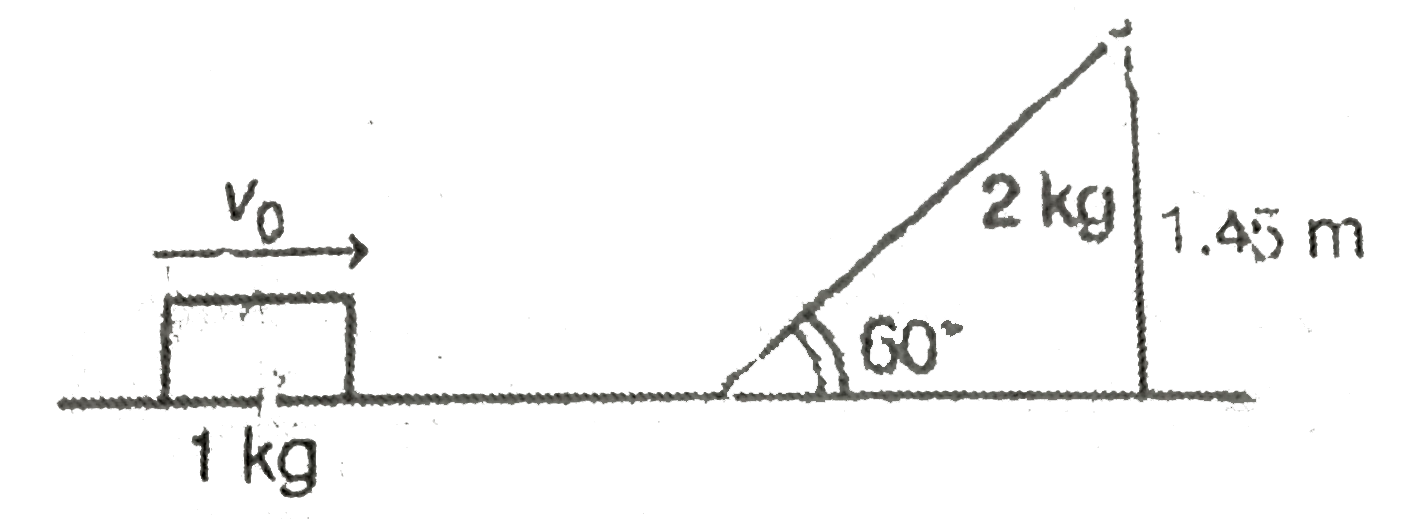
To what maximum height will the block rise
View Solution
Knowledge Check
A block of mass m is pushed towards a movable wedge of mass nm and height h, with a velocity u. All surfaces are smooth. The minimum value of u for which the block will reach the top of the wedge is
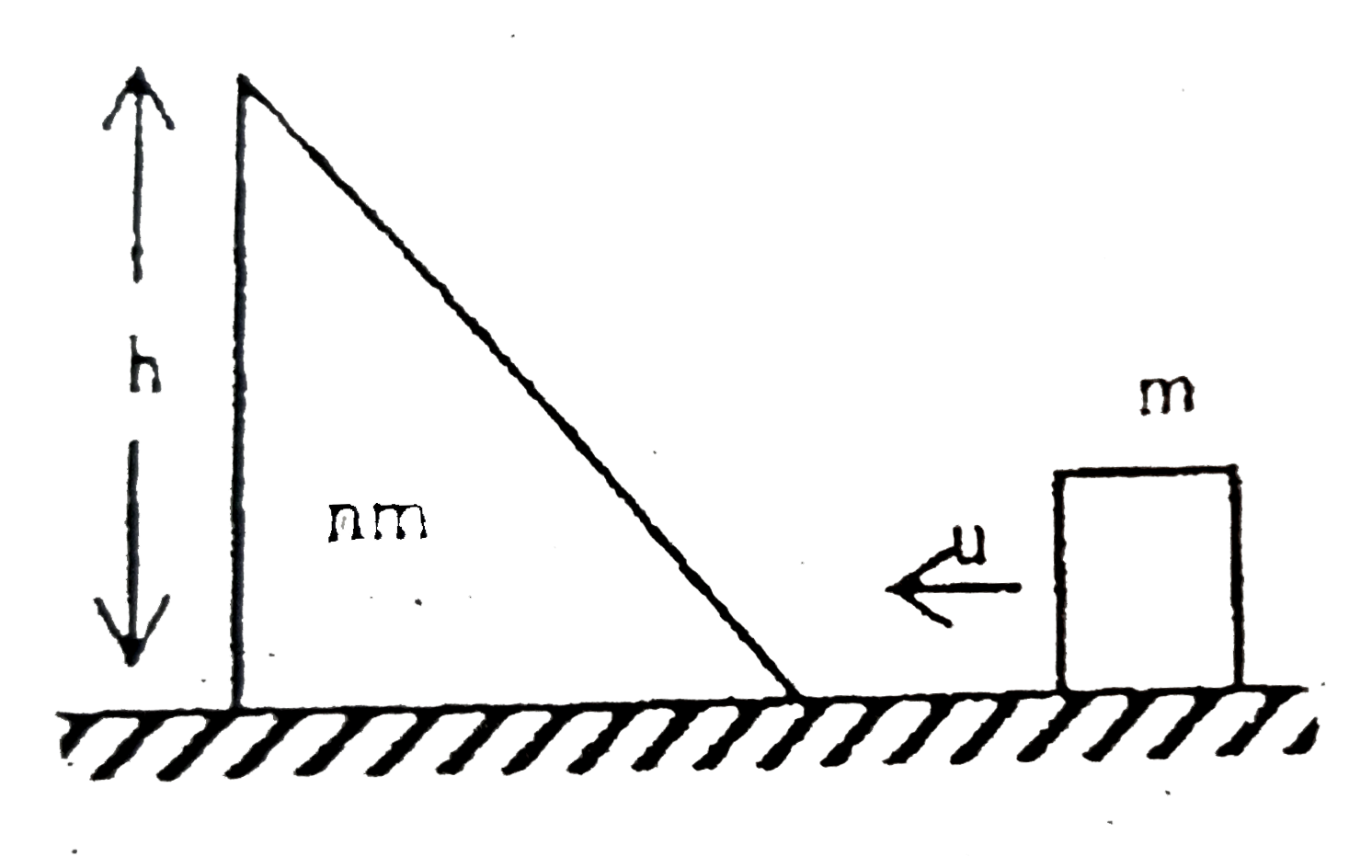 A√2ghBn2ghC√2gh(1+1n)D√2gh(1−1n)
A√2ghBn2ghC√2gh(1+1n)D√2gh(1−1n)A block of mass m is pushed towards a movable wedge of mass nm and height h, with a velocity u. All surfaces are smooth. The minimum value of u for which the block will reach the top of the wedge is
 A√2ghB2nghC√2gh(1+1n)D√2gh(1−1n)
A√2ghB2nghC√2gh(1+1n)D√2gh(1−1n)The system of block and wedges all of same mass shown in the figure is released from rest. All surfaces are smooth. Then:
 AThe speed of block A when it falls 50cm is 2√2m/sBThe speed of block B when A falls 50cm is 4m/sCThe speed of block B when A falls 50cm is √10m/sDThe speed of block C when A falls 50cm is √2m/s
AThe speed of block A when it falls 50cm is 2√2m/sBThe speed of block B when A falls 50cm is 4m/sCThe speed of block B when A falls 50cm is √10m/sDThe speed of block C when A falls 50cm is √2m/s
A block of mass m is released from the top of a wedge of mass M as shown in figure. Find the displacement of wedges on the horizontal ground when the block reaches the bottom of the wedges. Neglect friction everywhere.
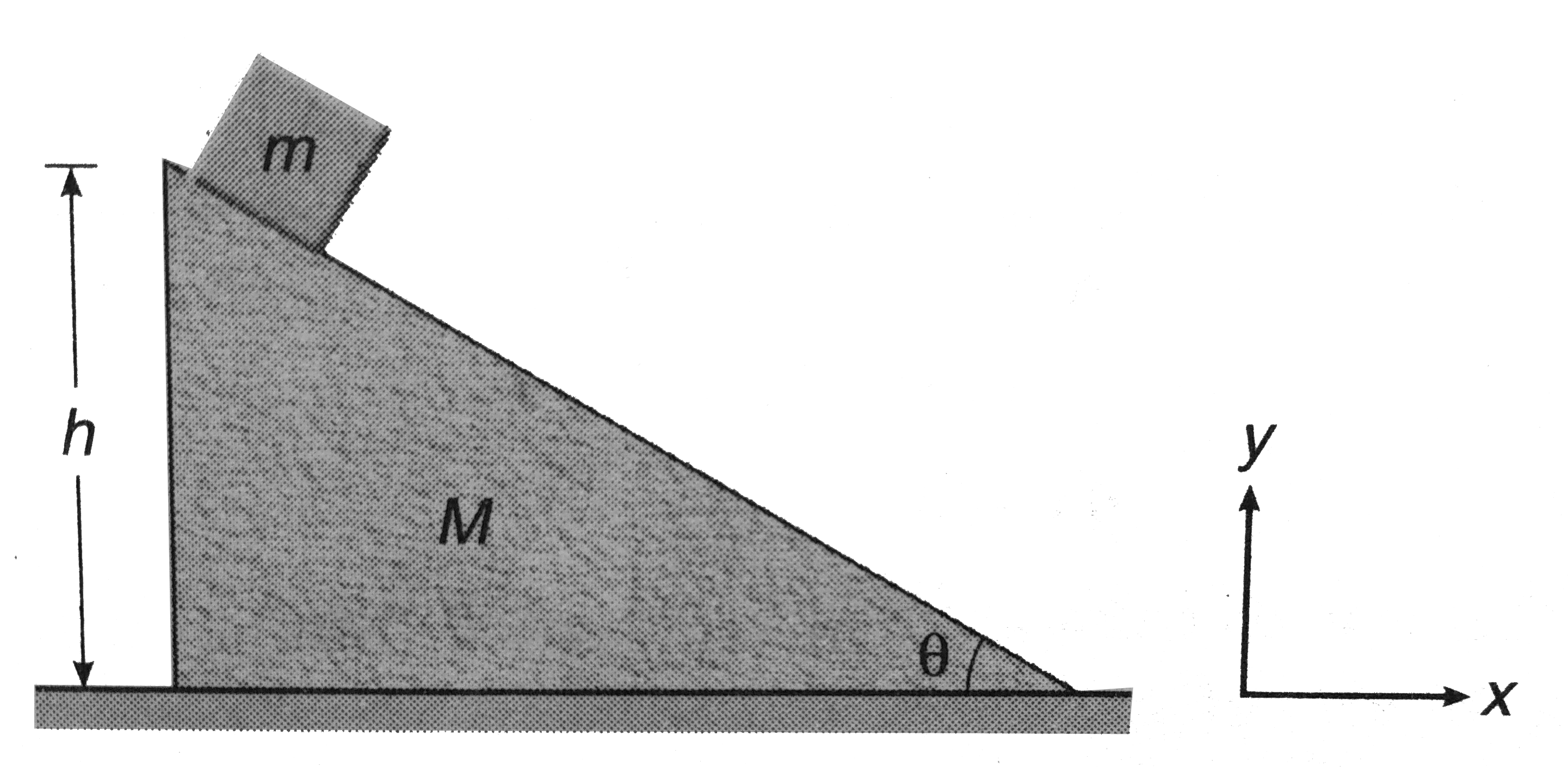
View SolutionA small block of mass m is pushed towards a movable wedge of mass ηm and height h with initial velocity u.All surface are smooth. The minimum value of u for which the block will reach the top of the wedge:

View SolutionA small block of mass m is pushed towards a movable wedge of mass ηm and height h with initial velocity u.All surface are smooth. The minimum value of u for which the block will reach the top of the wedge:

View SolutionA block of mass m is pushed towards the movable wedge of mass M and height h, with a velocity v0. All surfaces are smooth . The minimum value of v0 for which the block will reach the top of the wedge is
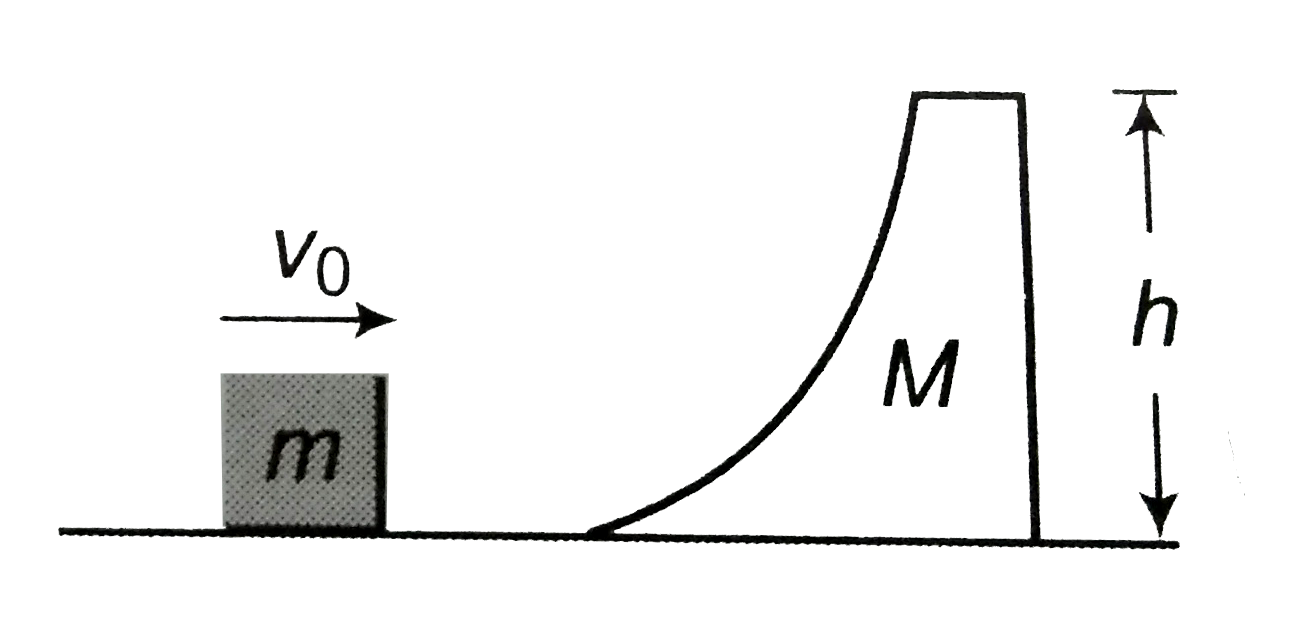
View SolutionA block of mass 1 kg is released from the top of a wedge of mass 2 kg. Height of wedge is 10 meter and all the surfaces are frictionless. Then
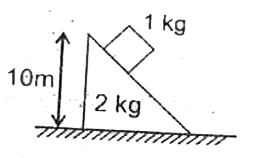
View Solution
